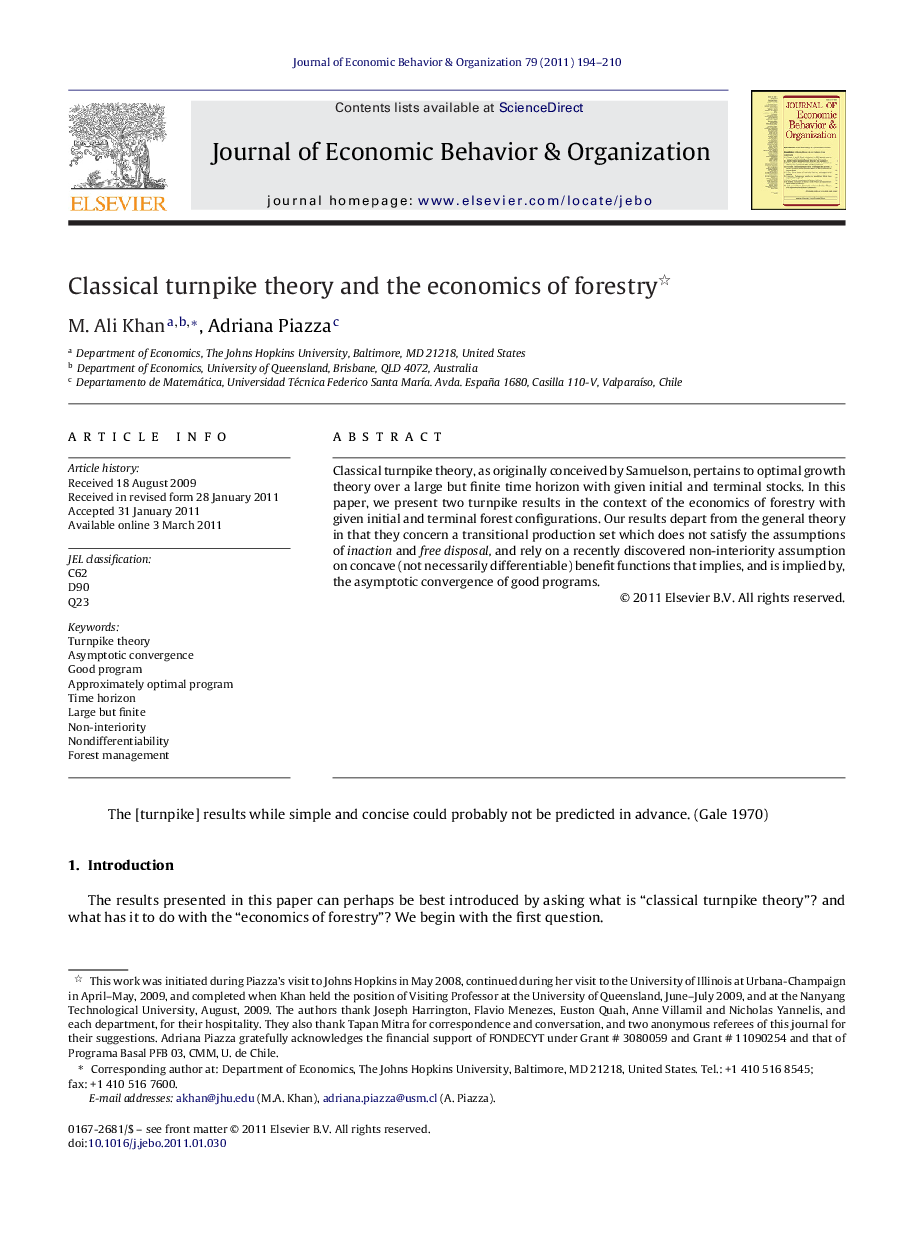| Article ID | Journal | Published Year | Pages | File Type |
|---|---|---|---|---|
| 883918 | Journal of Economic Behavior & Organization | 2011 | 17 Pages |
Classical turnpike theory, as originally conceived by Samuelson, pertains to optimal growth theory over a large but finite time horizon with given initial and terminal stocks. In this paper, we present two turnpike results in the context of the economics of forestry with given initial and terminal forest configurations. Our results depart from the general theory in that they concern a transitional production set which does not satisfy the assumptions of inaction and free disposal, and rely on a recently discovered non-interiority assumption on concave (not necessarily differentiable) benefit functions that implies, and is implied by, the asymptotic convergence of good programs.
Research highlights► We develop two classical turnpike results for the Mitra–Wan forestry model. ► The transition production set does not satisfy assumptions of inaction and free-disposal. ► We consider approximately optimal, large but finite-horizon programs. ► We work with a novel non-interiority assumption on concave benefit functions. ► We list three open questions.
